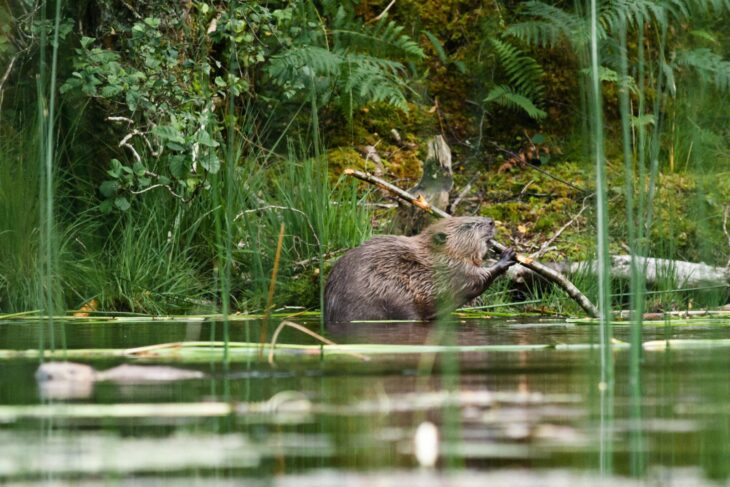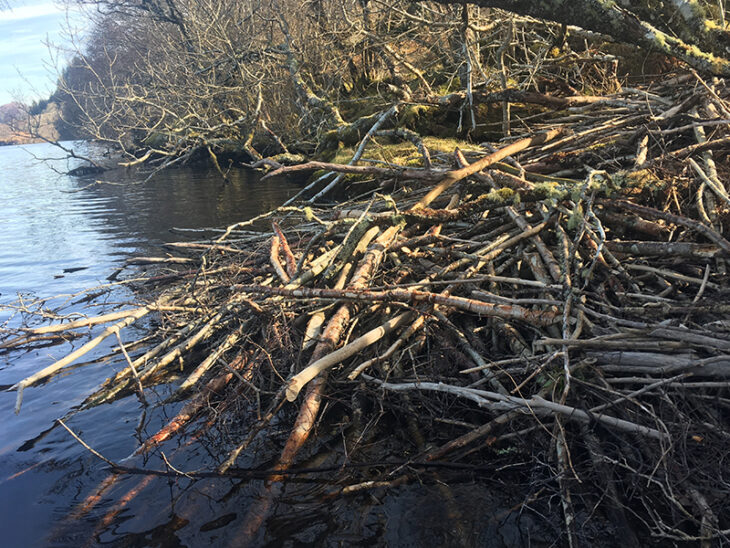The Scottish Wildlife Trust has welcomed the Scottish Government’s announcement that it will allow beavers to be introduced to new areas of Scotland outside of the current range of the species.

Lorna Slater, Minister for Green Skills, Circular Economy and Biodiversity visited the Trust’s Loch of the Lowes Visitor Centre and Wildlife Reserve to announce that:
- The Scottish Government will look for future beaver translocation release sites to include new areas of Scotland, to help increase beaver numbers.
- NatureScot will lead on developing a national beaver strategy to direct this work, as part a wider programme to restore and enhance biodiversity across Scotland.

The Trust is contributing to the development of the national beaver strategy alongside a wide range of stakeholders. Our Director of Conservation Sarah Robinson said:
““Beavers have a vital role to play in tackling the growing crisis facing nature. Achieving a thriving national population of beavers which is spread throughout Scotland’s lochs and rivers will unlock a huge range of benefits, including boosting biodiversity and creating new opportunities for wildlife tourism.
“Achieving a thriving national population of beavers which is spread throughout Scotland’s lochs and rivers will unlock a huge range of benefits, including boosting biodiversity and creating new opportunities for wildlife tourism.”
Sarah Robinson
“We strongly welcome the Scottish Government’s support for expanding the current range of the species into new areas of Scotland. There are more than 100,000 hectares of suitable woodland habitat around the country. Much of this habitat is in areas where there is a low risk of conflict with agriculture and other land uses.
“Moving beavers requires specialist skills and resources so providing funding and increasing the number of people who are trained to carry out translocations effectively is an important step forward.
“To fully benefit from the return of beavers to Scotland we need to see joined up thinking. We look forward to working with groups from a range of backgrounds to help shape a robust and forward-looking national strategy for the species. It’s vital that this strategy is coherent with the new Scottish Biodiversity Strategy, and that land managers are appropriately rewarded for managing habitat for beavers within the new system of land management subsidies.”
The Trust played a leading role in the reintroduction of beavers through the Scottish Beaver Trial, which began in 2009. This pioneering work, carried out in partnership with the Royal Zoological Society of Scotland, helped to pave the way for beavers to be given European Protected Species status in 2019.
Figures from NatureScot estimate that there are around 1000 beavers in Scotland, mainly in the Forth and Tay catchments. A smaller population was introduced to the Knapdale Forest in Argyll during the Scottish Beaver Trial and successfully reinforced during the successful Scottish Beavers project
Find out more about our work to bring beavers back to Scotland
